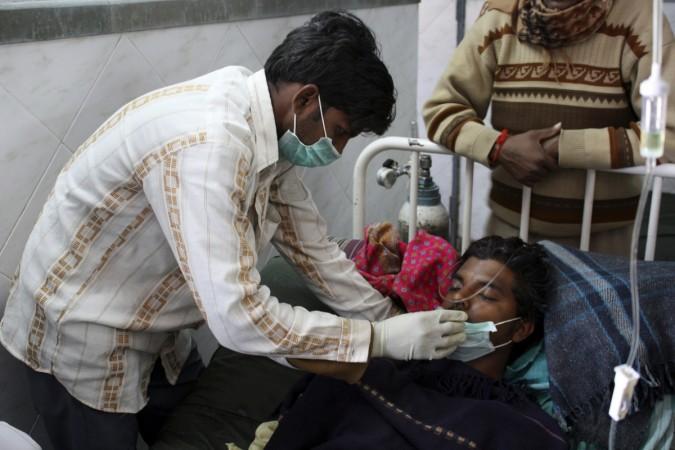
On the World Hepatitis Day, which is being observed today, the World Health Organization (WHO) has sounded an alarm that countries afflicted by the serious viral disease are doing enough to tackle it. More so, when nearly 1.5 million lives are lost worldwide each year due to hepatitis.
"The world has ignored hepatitis at its peril. It is time to mobilize a global response to hepatitis on the scale similar to that generated to fight other communicable diseases like HIV/AIDS and tuberculosis," Margaret Chan, the WHO Director-General, said in an official statement.
In India, hepatitis is emerging as a silent killer that consumes nearly 1 lakh lives every year.
And although the union health ministry has initiated an awareness campaign on the World Hepatitis Day, the successive governments have failed to introduce a sustained programme on the lines of tuberculosis and malaria elimination to fight hepatitis in the country, which has a large number of people suffering from the disease.
With nearly 50 million Indians infected with the hepatitis virus, India has the second largest number of hepatitis patients, after China. Poor sanitation and unsafe drinking water have been found to be the two potential leading causes of this acute viral infection in India.
Two forms of the disease (Hepatitis A and C) are quite preventable and sometimes even a simple act of washing hands can go a long way in eliminating the disease, said the ministry. Vaccination is the key when it comes to fighting Hepatitis B while antiviral medicines can cure 90 percent of the Hepatitis C cases.
The Indian government has, in the recent past, started a campaign that aims to shed light on prevention of the disease. The Indian health ministry's initiative is being endorsed by Bollywood megastar Amitabh Bachchan, since he has suffered from the disease, leading to substantial liver damage. Much more, however, needs to be done in the country to combat the threat, social health activists say.
Symptoms of this killer disease often go undetected till it reaches an alarming stage and causes substantial damage to the body. According to the WHO, 95 percent of people who are infected with Hepatitis B and C (the most common forms of viral disease) don't even know of the infection. Both Hepatitis B and C lead to acute liver diseases such as cirrhosis and cancer.
The WHO has urged countries to develop a framework for fighting the viral disease, which is even more dangerous than HIV.
The global health agency said that nearly 400 million people infected with hepatitis globally, which is more than 10 times the number of people living with HIV. An estimated 1.45 million people died of the disease in 2013 – up from less than a million in 1990.
Know hepatitis to fight it
Hepatitis B
Key facts
- Hepatitis B is a viral infection that attacks the liver and can cause both acute and chronic disease.
- The virus is transmitted through contact with the blood or other body fluids of an infected person.
- An estimated 240 million people are chronically infected with hepatitis B (defined as hepatitis B surface antigen positive for at least 6 months).
- More than 686,000 people die every year due to complications arising from hepatitis B, including cirrhosis and liver cancer.
- Hepatitis B is an important occupational hazard for health workers.
- However, it can be prevented by currently available safe and effective vaccine.
Symptoms
Most people do not experience any symptoms during the acute infection phase. However, some people have acute illness with symptoms that last several weeks, including yellowing of the skin and eyes (jaundice), dark urine, extreme fatigue, nausea, vomiting and abdominal pain. A small subset of persons with acute hepatitis can develop acute liver failure, which can lead to death.
In some people, the hepatitis B virus can also cause a chronic liver infection that can later develop into cirrhosis of the liver or liver cancer.
Who is at risk for chronic disease?
The likelihood that infection becomes chronic depends upon the age at which a person becomes infected. Children less than 6 years of age who become infected with the hepatitis B virus are the most likely to develop chronic infections.
Hepatitis C
Key facts
- Hepatitis C is a liver disease caused by the hepatitis C virus. The virus can cause both acute and chronic hepatitis infection, ranging in severity from a mild illness lasting a few weeks to a serious, lifelong illness.
- The hepatitis C virus is a blood borne virus and the most common modes of infection are through unsafe injection practices, inadequate sterilisation of medical equipment, and the transfusion of unscreened blood and blood products.
- Globally, between 130-150 million people have chronic hepatitis C infection.
- A significant number of those who are chronically infected will develop liver cirrhosis or liver cancer.
- Approximately 700,000 people die each year from hepatitis C-related liver diseases.
- Antiviral medicines can cure approximately 90% of persons with hepatitis C infection, thereby reducing the risk of death from liver cancer and cirrhosis, but access to diagnosis and treatment is low.
- There is currently no vaccine for hepatitis C; however research in this area is ongoing.
Symptoms
The incubation period for Hepatitis C is 2 weeks to 6 months. Following the initial infection, approximately 80 percent of people do not exhibit any symptoms. Those who are acutely symptomatic may exhibit fever, fatigue, decreased appetite, nausea, vomiting, abdominal pain, dark urine, grey-coloured faeces, joint pain and jaundice (yellowing of skin and the whites of the eyes).
(Source: WHO)

















